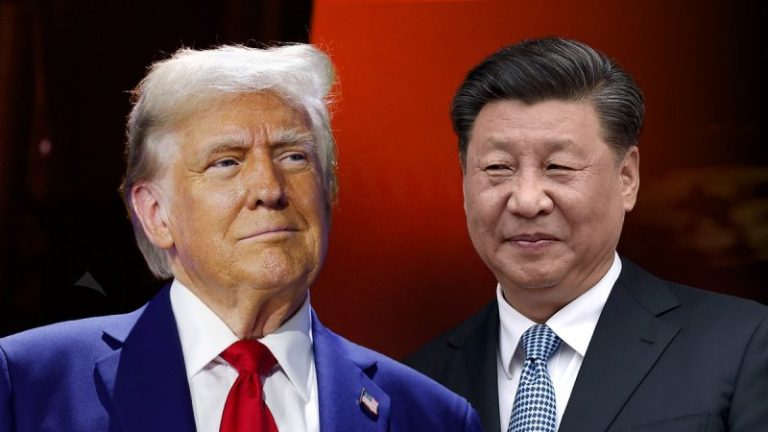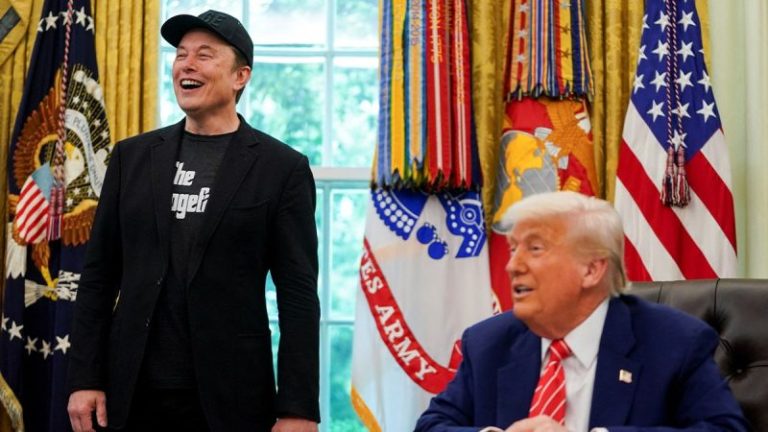NEWYou can now listen to Fox News articles!
The fallout between Elon Musk and President Donald Trump is an evolving situation marked by a public blowup on Thursday, but their relationship ties back to Trump’s first term and even earlier.
A November 2016 CNBC interview with the Tesla CEO, who’s now the richest man in the world, took a critical tone of the now president just days before he was elected president in an upset that signified the strength of the populist movement.
‘Honestly, I think Hillary’s economic policies and her environmental policies particularly are the right ones, you know, but yeah. Also, I don’t think this is the finest moment in our democracy at all,’ Musk said.
‘Well, I feel a bit stronger that probably he’s not the right guy. He just doesn’t seem to have the sort of character that reflects well on the United States,’ he later added in the interview.
During Trump’s first term, Musk was part of some of his economic advisory councils, which often includes CEOs, but ultimately left his post because he disagreed with the president’s move to exit the Paris Climate Accords.
‘Am departing presidential councils. Climate change is real. Leaving Paris is not good for America or the world,’ Musk posted at the time.
The two continued to have an on-and-off relationship, but there were some positive signs in May 2020.
‘Elon Musk, congratulations. Congratulations, Elon. Thanks, Elon. For Elon and 8,000 SpaceX employees, today is the fulfillment of a dream almost two decades in the making,’ Trump said at the Kennedy Space Center in May 2020.
And at the SpaceX Demo-2 launch, Trump said he and Musk communicate regularly.
‘Well, I won’t get into it. But, yeah — but I speak to him all the time. Great guy. He’s one of our great brains. We like great brains. And Elon has done a fantastic job,’ he said.
Fast forward to 2022, when Musk purchased Twitter and renamed it X, and brought back Trump’s account that November, after it was suspended after the events of Jan. 6, 2021. In 2022, Musk also announced that he would vote Republican, but indicated he would back Florida Gov. Ron DeSantis if he opted to seek the nomination.
DeSantis launched his campaign on X in a ‘space,’ a virtual public event forum, with Musk, who also reportedly significantly financially backed the Florida governor, according to The Wall Street Journal.
However, a major turning point was in July 2024, after the assassination attempt of Trump at a rally in Butler, Penn.
‘I fully endorse President Trump and hope for his rapid recovery,’ Musk posted.
Musk then campaigned for the president, including a famous moment when he was jumping on stage at his comeback rally in Butler.
‘I want to say what an honor it is to be here and, you know, the true test of someone’s character is how they behave under fire, right?’ Musk said at the rally. ‘And we had one president who couldn’t climb a flight of stairs and another who was fist pumping after getting shot.’
‘This is no ordinary election,’ the tech CEO continued. ‘The other side wants to take away your freedom of speech.’
‘Just be a pest to everyone,’ he added. ‘You know, people on the street everywhere: Vote, vote, vote!’
The tech billionaire spent roughly $300 million through America PAC to boost swing state voter efforts, including Pennsylvania.
By the time the presidential election rolled around, Trump and Musk appeared to be close friends as the Tesla CEO was with Trump in Mar-a-Lago on election night. Over the next few days, Musk remained in Florida and was reportedly advising Trump on appointments and policy as the transition to a new administration kicked off.
A week later, shortly before Musk and the new president appeared at a SpaceX launch together in Texas, Trump announced that Musk and tech entrepreneur Vivek Ramaswamy would be heading up the Department of Government Efficiency in an effort to rid the government of waste, fraud, and abuse.
Trump described the pair as ‘two wonderful Americans’ and although Ramaswamy left that post in January and is now running for governor in Ohio, Musk stayed on and quickly became the face of an agency that made him the main target of attacks from Democrats pushing back on spending cuts that they argued were too drastic.
Protests erupted nationwide against Musk and DOGE including violent outbursts at his Tesla dealerships that tanked the company’s stock and were labeled as acts of ‘domestic terrorism’ by the Justice Department.
During the first few months of the year, Musk and Trump were spotted together at several viral events including a UFC fight, an Oval Office meeting where Musk’s son ‘Little X’ stole the show, and a cabinet meeting in late February where Musk was the main focus.
In March, Trump hosted Elon at a Tesla showcase in front of the White House amid a dip in Tesla stock where the president told reporters he was purchasing a Tesla while touting the company.
As Musk’s time at DOGE began to wind down, his employee classification allowed him to serve for 130 days, the newly formed agency had become the poster child of anti-Trump sentiment from Democrats who consistently attacked the $175 billion in spending cuts that DOGE estimated it delivered.
Signs of fracture in the relationship began showing in late May when Musk took a public shot at Trump’s ‘big beautiful bill’ as it made its way through Congress.
‘I was disappointed to see the massive spending bill, frankly, which increases the budget deficit, not just decreases it, and undermines the work that the DOGE team is doing,’ Musk said.
Two days later, Musk announced his official departure from DOGE.
‘As my scheduled time as a Special Government Employee comes to an end, I would like to thank President @realDonaldTrump for the opportunity to reduce wasteful spending,’ Musk said, adding that the effects of DOGE ‘will only strengthen over time as it becomes a way of life throughout the government.’
DOGE, which fell short of Musk’s initial goal of slashing $1 trillion in spending which Musk said he still remains optimistic will happen in the future, will continue its work without Musk, who said, ‘I look forward to continuing to be a friend and adviser to the president.’
That optimistic tone shifted drastically on June 3 when Musk took to X, the platform he owns, and blasted the budget reconciliation bill calling it ‘a disgusting abomination’ and criticizing the Republicans who voted for it.
‘KILL THE BILL,’ Musk said the next day.
A day after that, on Thursday, the feud hit a fever pitch.
While speaking with reporters in the Oval Office, Trump said that he was ‘very disappointed’ by Musk’s vocal criticisms of the bill. The president claimed that Musk knew what was in the bill and ‘had no problem’ with it until the EV incentives had to be cut.
On X, Musk called that assessment ‘false.’
Trump turned to social media to criticize Musk, who he appointed to find ways to cut $2 trillion after forming the Department of Government Efficiency (DOGE).
‘Elon was ‘wearing thin,’ I asked him to leave, I took away his EV Mandate that forced everyone to buy Electric Cars that nobody else wanted (that he knew for months I was going to do!), and he just went CRAZY!’ Trump said in one post.
In another post, Trump said, ‘I don’t mind Elon turning against me, but he should have done so months ago. This is one of the Greatest Bills ever presented to Congress. It’s a Record Cut in Expenses, $1.6 Trillion Dollars, and the Biggest Tax Cut ever given.’
‘If this Bill doesn’t pass, there will be a 68% tax increase, and things far worse than that. I didn’t create this mess, I’m just here to FIX IT. This puts our Country on a Path of Greatness. MAKE AMERICA GREAT AGAIN!’
At one point, Musk referenced late pedophile Jeffrey Epstein in relation to Trump as part of the larger tirade in a comment that several Republicans told Fox News Digital went ‘too far.’
Other posts from Musk included a claim that Trump would not have won the election without his help while accusing Trump of ‘ingratitude.’ In another post, Musk suggested that Trump should be impeached and replaced by Vice President Vance.
It is unclear if a resolution to the feud is coming in the next few days. Fox News Digital reported on Friday morning that Musk wants to speak to Trump and that White House aides could possibly broker a meeting.
Trump told Fox News on Friday that he isn’t interested in talking to Musk, adding that ‘Elon’s totally lost it.’
Trump also said to Fox News’ Bret Baier that he isn’t worried about Musk’s suggestion to form a new political party, citing favorable polls and strong support from Republicans on Capitol Hill.
This post appeared first on FOX NEWS






